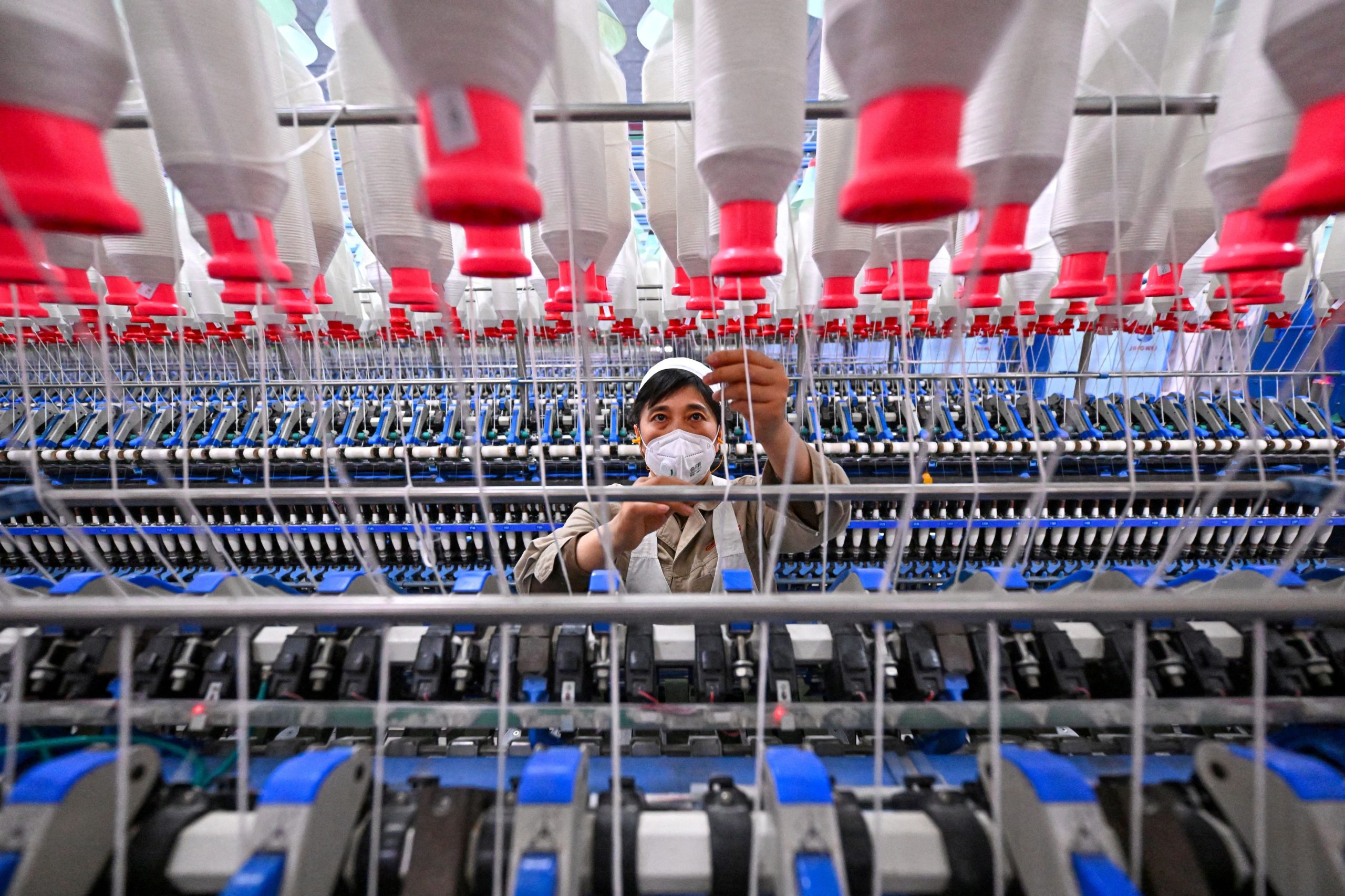SINGAPORE—Beijing threatened to “fight to the end” as President Trump early Wednesday morning brought the total of the tariffs imposed on China in his second term to 104%, with both countries digging in for a protracted fight that lays bare the global economic fault line at the heart of the trade war .
While Trump has dramatically expanded his broadsides over trade to encompass allies and adversaries alike, China remains his foremost target. That reflects not just the intensifying geopolitical rivalry but also China’s 20 years of growing trade surpluses with the U.S. that Trump has said have been ruinous for American jobs and industries.
Even as other countries make a beeline to strike deals with the White House, there will likely be no end to trade upheavals as long as that gap between the world’s two largest economies persists. A drawn-out brawl heightens the risk of major disruption to international commerce and a downturn in global growth .
“We are going down the path of a more fractured world economy,” said Neil Shearing , group chief economist at Capital Economics in London.
Beijing vowed on Tuesday to retaliate further if Trump carries out his threat to raise the tariff on Chinese goods by an additional 50% . Trump’s additional 50% threat was itself a response to China’s decision last week to hit back at the so-called Liberation Day tariffs, including a blanket tariff of 34% on U.S. goods and curbs on access to rare-earth minerals.
“The U.S. threat to escalate tariffs on China is a mistake on top of a mistake, which once again exposes the U.S.’s blackmail nature,” China’s commerce ministry said Tuesday. “If the U.S. insists on its own way, China will fight to the end.”
The punch and counterpunch suggest neither side is yet ready to negotiate a truce. China sees Trump’s actions as an existential threat aimed at keeping it from surpassing the U.S. as the world’s biggest and richest economy. Trump sees China’s dominance of global trade as the surest sign that the international trading system is rigged against America.
Though Trump has in the past shown a willingness to change course unexpectedly in pursuit of a deal, for now, “the U.S. and China are stuck in an unprecedented, and expensive, game of chicken,” Nomura chief China economist Ting Lu said in a note to clients Tuesday.
White House press secretary Karoline Leavitt said Trump’s tariffs will go into effect just after midnight on Wednesday, including new duties of 84% charged on products from China. Those tariffs stack on top of 20% tariffs Trump had imposed earlier this year. Along with tariffs maintained by the Biden administration that averaged about 21%, the effective average tariff rate on China would now be about 125%.
Beijing’s warnings on Tuesday included a pledge to deploy unspecified countermeasures against the U.S. if Trump’s tariffs keep climbing. State-owned investment firms have this week stepped in to buy up Chinese stocks in an effort to support prices.
China’s central bank on Tuesday let the Chinese currency drift lower against the dollar. Guiding the yuan’s value lower can undermine the impact of Trump’s tariffs and help Chinese factories by making China’s goods cheaper when purchased in U.S. dollars, though economists say there are limits to the strategy as it could fuel capital flight from China.
After focusing on China in his first term, Trump has broadened his trade fight in his second term, accusing the European Union, Japan, Mexico, Canada and other trading partners of keeping their import barriers high while flooding the U.S. with cars, machinery and consumer goods, squeezing U.S. industries and costing American jobs.
Even so, China has been singled out. The cumulative tariffs announced since his January inauguration mean Chinese imports—worth around $400 billion in 2024—face higher tariffs than those from any other major trading partner.
A U.S. trade representative report published March 31 detailing trade barriers to U.S. imports in dozens of countries devoted almost 50 pages to China, touching on complaints around technology transfer, import quotas, food-safety standards and counterfeit goods. Canada and Mexico, two other recent targets of Trump’s ire over trade, got six and seven pages, respectively.
China’s links to other U.S. trading partners are also facing greater scrutiny, as the U.S. seeks to prevent Chinese firms from dodging tariffs by setting up operations in third countries . Some of the countries facing stiff new tariffs include Mexico, Vietnam and Cambodia, all of which have enjoyed booming exports to the U.S. since 2018 thanks to their role as “connector” economies linking China’s huge factory floor to the U.S. market.
“In many ways, Liberation Day was designed to create a tariff wall around China, by disproportionately penalizing the connector economies,” Deutsche Bank analysts wrote in a report published Monday.
Underlying Trump’s push is an economic relationship, built up through years of intersecting policy choices in Washington and Beijing and which Trump now wants to unwind, that made the U.S. the world’s paramount consumer and China its pre-eminent producer.
China in 2024 reported a global goods trade surplus of close to $1 trillion , cementing its place as the world’s top exporter of manufactured goods. The U.S., meanwhile, notched up a deficit in goods trade of $1.2 trillion, the latest in an unbroken run of goods-trade deficits stretching back to 1975.
As well as China, which accounts for some $300 billion of the trade shortfall, the U.S. also runs large deficits in goods trade with Mexico, Vietnam and the EU.
Trump’s tariff strategy aims to reduce the U.S. trade deficit by pinching imports and forcing manufacturers to move production to the U.S.
Supporters of the global manufacturing system say it keeps costs down and provides consumers with an abundance of affordable goods, while allowing the U.S. economy to focus more squarely on technology, services and other high-value activities.
Some analysts, as well as key figures in Trump’s orbit including trade adviser Peter Navarro , argue that trade imbalances reflect barriers to imports, currency manipulation, and lavish industrial subsidies in countries such as China that distort the global economy .
To most economists, however, large and persistent trade surpluses are evidence of an economy that saves too much and consumes too little, while deficits like those in the U.S. simply show an economy saving little and spending a lot, financed in part by borrowing from abroad.
Narrowing persistent U.S. deficits in trade and reducing China’s enormous surpluses would require painful economic overhauls in both economies—and could take years to yield results.
Chinese officials have pledged to boost consumption, but analysts are unsure if their plan is to give the economy a short-term lift or shift it more decisively away from an overreliance on investment and exports. Trump’s tariff plans could squeeze U.S. spending and bring down the deficit, but he also wants to cut taxes and lure foreign investment, which would typically expand it.
“The underlying problem is that China has to consume more and the U.S. has to save more. You are not going to fix this in one day,” said Arup Raha , head of Asia economics at Oxford Economics in Singapore.
Write to Jason Douglas at jason.douglas@wsj.com



